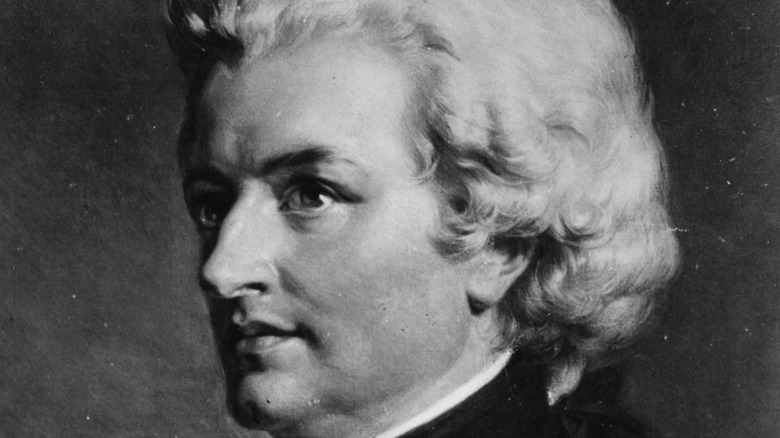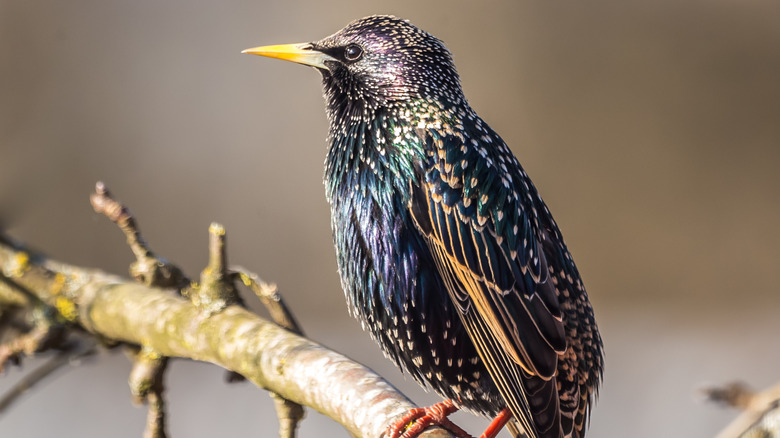What You Didn't Know About The Pet Mozart Had
It's fitting that Wolfgang Amadeus Mozart, one of the greatest composers of all time, would have a bird — specifically, a starling — as a pet. Some historians speculate Mozart bonded with his starling due to the bird's song.
According to NPR, starlings are not native to the United States, but they have been an invasive species since they were unleashed into Central Park in the 1890s. Starlings compete against native American birds including chickadees and bluebirds, and they destroy significant amounts of crops by eating them and defecating on them. Flocks of starlings, called murmurations, are comprised of even millions of starlings swirling around each other as they fly, somehow never colliding with one another.
Mozart's affinity with his starling is a mystery to historians. Some believe the composer was inspired by the bird's song when composing his own Concerto No. 17 in G. But it has also been widely reported that the composer had already finished the concerto by the time the starling became his companion in 1784.
Mozart's pet starling is a fun, if somewhat baffling, fact about the composer. Despite the confusion, here's what historians and researchers know about the strange pair.
Mozart's starling gave him inspiration and grief
Historians have proof of Wolfgang Amadeus Mozart's pet starling from the composer's own records. As noted by NPR, he kept a handwritten log of his purchases, including the time in 1784 when he spent his "kreuzers" on a starling bird bearing the German name for its species, Vogelstar.
In conversation with NPR in 2017, naturalist and author Lyanda Lynn Haupt, who wrote the 2017 book "Mozart's Starling," said that Mozart met the bird in a shop. He reportedly heard the bird sing the Allegretto from his Concerto No. 17, which he had just finished, and then he copied down the bird's version. It is unclear whether Mozart happened upon the bird singing his song, or whether he taught the bird the song himself.
Another notable part of the story of Mozart's starling is its end; Mozart wrote the bird an elegy when it died after three years of companionship. "A little fool lies here whom I held dear–— a starling in the prime Of his brief time, Whose doom it was to drain Death's bitter pain," read the elegy (via "Mozart's Starling"). "Thinking of this, my heart is riven apart. Oh reader! Shed a tear ..."
It's clear that Mozart felt a genuine affection for his feathered friend. "The poem shows that Mozart had become thoroughly acquainted with the typical starling personality — bright, personable, charming, mischievous," Haupt wrote in "Mozart's Starling." "Some historians have claimed that the funeral verses are simply a farce, but no."

